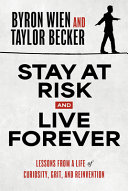

The book emphasizes that risk is an inherent part of life and business. Instead of avoiding risk, individuals and organizations should embrace it as a catalyst for growth and innovation. The author argues that calculated risks can lead to significant rewards, both personally and professionally. By taking risks, one can uncover new opportunities, learn from failures, and ultimately achieve greater success. The narrative is supported by various case studies and real-life examples of successful entrepreneurs and leaders who took risks that paid off, illustrating the importance of a risk-taking mindset.
Continue readingA growth mindset, as opposed to a fixed mindset, is crucial for navigating the uncertainties of life and business. The author discusses how individuals with a growth mindset are more likely to view challenges as opportunities for learning and development. This perspective fosters resilience, adaptability, and a willingness to experiment, which are essential traits in today's fast-paced world. The book provides strategies for cultivating a growth mindset, such as embracing feedback, setting learning goals, and celebrating small wins, encouraging readers to shift their thinking to thrive in uncertain environments.
Continue readingIn the modern landscape, technology plays a vital role in managing and mitigating risks. The book explores various technological tools and methodologies that can help individuals and organizations assess risks more effectively. From data analytics to machine learning algorithms, the author illustrates how technology can provide insights that inform decision-making. Additionally, the book highlights the importance of staying updated on technological advancements and integrating them into risk management strategies, ensuring that readers understand how to leverage technology to their advantage.
Continue readingResilience is a key theme in the book, particularly in the context of organizations. The author outlines the characteristics of resilient organizations, such as flexibility, strong leadership, and a supportive culture. By fostering resilience, organizations can better withstand disruptions and adapt to changing circumstances. The book provides actionable steps for leaders to build resilient teams, including promoting open communication, encouraging collaboration, and investing in employee development. This idea underscores the necessity of resilience in achieving long-term success in a volatile environment.
Continue readingThe author emphasizes the significance of community and collaboration in taking risks. Surrounding oneself with a supportive network can provide encouragement and resources when venturing into the unknown. The book discusses how communities can foster a culture of risk-taking by sharing experiences, knowledge, and support. It encourages readers to seek out mentors, join networks, and engage with like-minded individuals to enhance their risk-taking capabilities. This idea illustrates that while risk-taking can be an individual endeavor, the support of a community can amplify one's chances of success.
Continue readingFailure is often viewed negatively, but the book reframes it as a valuable learning opportunity. The author argues that many successful individuals have faced failures and setbacks, which ultimately contributed to their growth and success. The book provides a framework for analyzing failures, extracting lessons, and applying those insights to future endeavors. This perspective encourages readers to shift their attitude towards failure, viewing it as a stepping stone rather than an endpoint, and promotes a culture of experimentation and innovation.
Continue readingThe book concludes with a discussion on sustainable risk-taking, emphasizing the need for balance. While taking risks is essential for growth, it is equally important to ensure that these risks are sustainable and aligned with one's values and long-term goals. The author outlines strategies for assessing the sustainability of risks, including evaluating potential impacts, considering ethical implications, and aligning with personal or organizational missions. This idea encourages readers to approach risk-taking thoughtfully, ensuring that their actions contribute positively to their lives and the broader community.
Continue reading